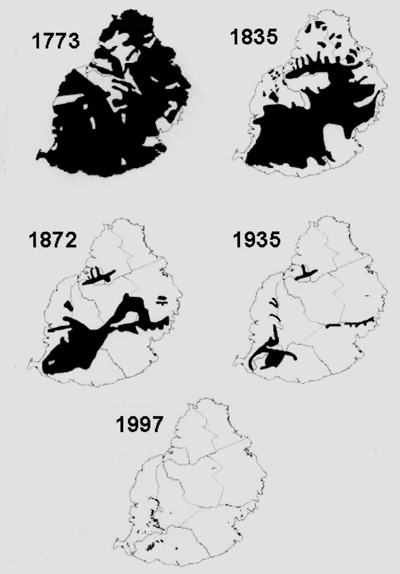Last May I make a field study to Mauritius. The goal of this expedition was to create a portrait of Mauritius and its wildlife, focusing on the geography of the island and the endemic species, with a primary focus on the Echo Parakeet.
The project was sponsored by the Artists for Conservation Foundation (AFC). The AFC seeks do establish legacies from expeditions that will raise funds for conservation organizations. In my case the beneficiary is the Echo parakeet project of the World Parrot Trust.
After spending time finishing the handwritten, illustrated log and sorting out hundreds of photographs I finally sat down to concentrate on making paintings.
The first result is shown below. I'm going to finish some more and then make a selection that could serve as a source for WPT cards or prints.
Mauritius is an extraordinary island for several reasons, the most important being the salvation of the only parrot species of the Western Indian Ocean islands.
The island was colonized from 1598 on, first by the Dutch, then by the French and after that by the British. All three nations went out of their way to destroy the natural habitat in which the endemic species lived. Many species died out, the most well known being the Dodo, the Rodrigues Solitaire and six or seven Mascarene parrot species.
For those who don't exactly know where Mauritius is: it's approximately one and a half hour flying from Madagascar, to the east and it's part of the Mascarene islands.
The maps below show the dramatic state of deforestation over the centuries. The few black spots that are left on map no. 5 represent the original endemic forest. I have visited two of those areas, one being the off coast island sanctuary of Ile aux Aigrettes which hosts lowland coastal forest and the other being the Black River Gorges National park with upland wet and dry forest which is located in the south west of Mauritius.

The Black River NP covers an area of approx. 70 km2. It is the main home of the Echo parakeet also called Mauritius parakeet (Psittacula Echo), or just short "Echo".
The Echos are closely related to the Indian Ring-necked Parakeet (Psittacula krameri). On pictures they look similar but seeing Echos in the wild makes you realize they look quite different from their cousins. The Echo is a little larger, their green is different (a more 'mossy' green with more shades of it), it has rounded wings and the tail is noticeably shorter. And what is really different is their call. The call of the Echo is like the call of a parrot (‘kaaark kaaark’) The call of the Indian Ring-necked Parakeet (which are easily spotted in the parks of Amsterdam where I regularly see them) is more the chattering call of a parakeet. Also the pink neck band is different; the Echo has more of a collar while the Krameri has a ring.
The Echo was once on of the most rare bird species in the world. Their habitat was destroyed by forest logging and black rats were competing for food and (nesting) cavities and were predating the parakeet's eggs.
The project to save the Echo Parakeet from extinction begun in 1974 when the situation was almost hopeless and only took off after funding of the WPT in 1990. At this time there were only 12 individuals left. The course and success of the project can be read on the online publications of Psittascene on the WPT website. The survival of the species is the result of the diligence and personal motivation of a few people who did not always find readily help of the Mauritian government as I learned from my guide dr. Carl Jones who is the most important drive behind the project of saving the Echos. When walking around in the relatively small area of Black River NP and seeing the Echos flying around freely and interacting with each other you realize it's a miracle that this species still exists.
Although there are approximately 400 individuals at the moment it is nonetheless a fragile population. Threats like the outbreak of Psittacine Beak and Feather Disease (PBFD) are a serious matter that make you worry about the only parrot in the Western Indian Ocean. The painting below shows my vision on this parrot: a unique species that exists on a tropical island, like survivors on a raft.

































